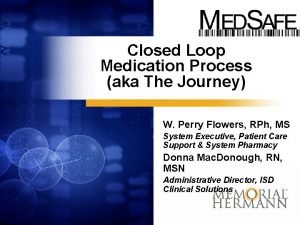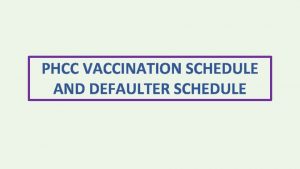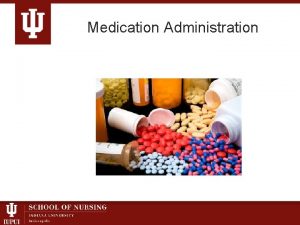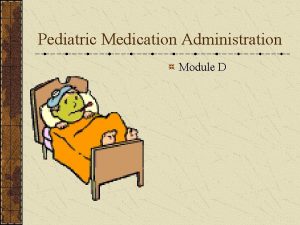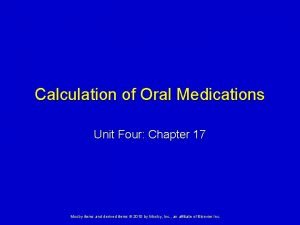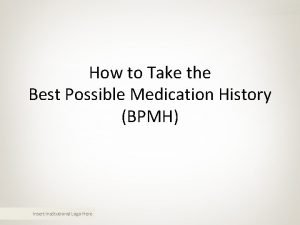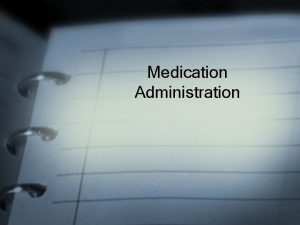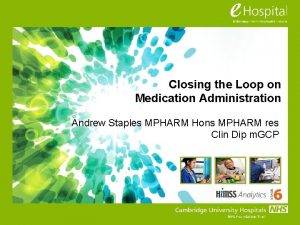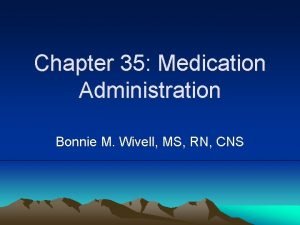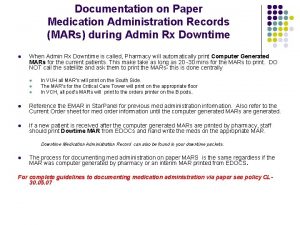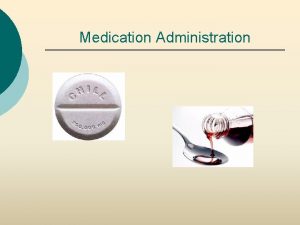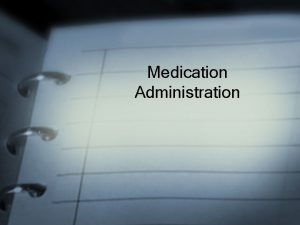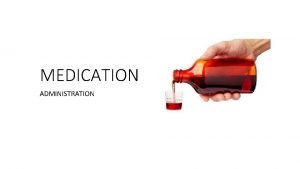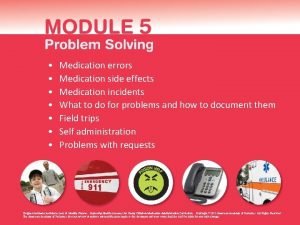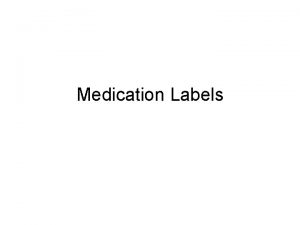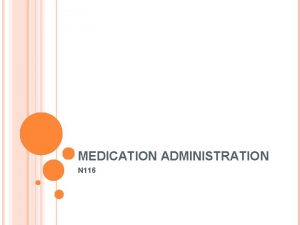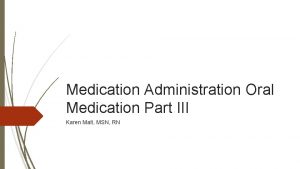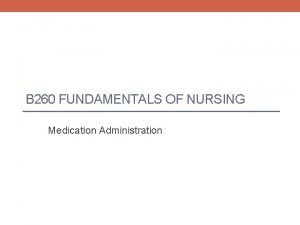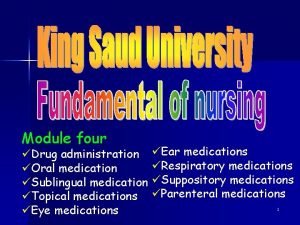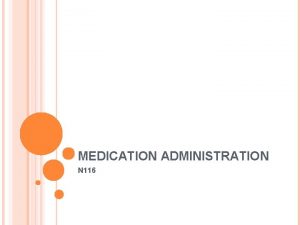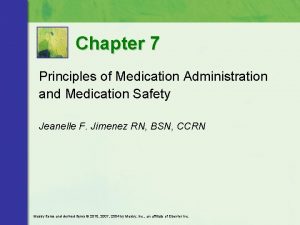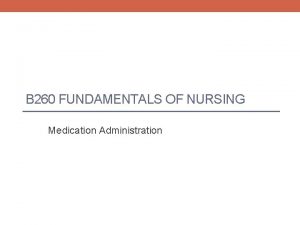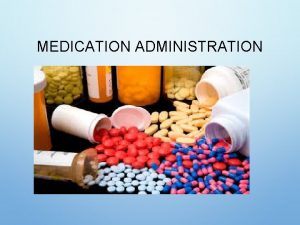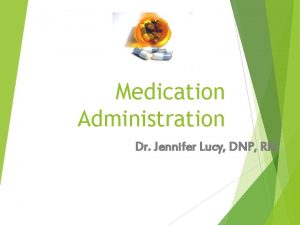MEDICATION ADMINISTRATION NO MISTAKES Know the medication Will


















- Slides: 18

MEDICATION ADMINISTRATION

NO MISTAKES • Know the medication • Will it make the pt drowsy? • Can they drive home? • Could it cause nausea or vomiting? • Know the route • IM, SC, Pill, Drops, topical, inhalation etc • Check pt’s allergies etc.

Only the Licensed Doctor or PA or can Rx • Not the RN • The order should be in writing

Three “checks” before going to the pt. When medication : 1. is removed from storage 2. is prepared 3. is returned to storage

The Seven “Rights 1. Right Patient • With 2 identifiers 2. Right Drug 1. With the 3 checks done by yourself 3. Right Dose • Checked against physician’s order 4. Right Route 4. Right Time • And tell pt when to take next dose 5. Right Technique 6. Right documentation

The Seven “Rights • technique



The patient has the right to refuse • Tell the doctor • Chart it

Correct dose requires math Three systems are used • Metric • Most used • Based on 10 • Grams and liters • Apothecary • Old & not used • Grains, drams, minims • Household • Teaspoons and cups

Metric system • Represents strength • Grams, milligrams and micrograms • Milliliter (m. L) for volume • Liquid meds are measured in liters • I m. L occupies one cubic centimeter (cc) of space • So “cc” and “m. L” are the same • cc is not used in charting; use m. L

Convert • Convert within the same system: • The provider’s order might be in grams, but the bottle might be in mg. • Convert one system to another • The doctor’s dose might read “ 5 m. L” but the MA has to tell the pt to give “one teaspoon” at the next dose.

Equivalents in the metric system • 1000 mcg = • 1000 mg = • 1000 g = I mg Ig 1 kg • 1000 m. L = 1 L


Decimal point • Use it before the number • Don’t use after a whole number • As a trailing number • Right 0. 2 • Wrong: 2. 0 • It could be mistaken for 20

All measurements have to be • in the same system and • the same units

N x V = A Dose N (amount NEEDED : doctors order) A (amount AVAILABLE on hand) tablet, liquid) Example: Order: 240 mg acetaminophen PO Supply on hand: 160 mg/5 m. L X V (Vehicle, or form of med) = Dose 240 mg / 160 mg = 1. 5 x 5 m. L = 7. 5 The correct amount of medication to be administered is 7. 5 m. L

The MA should watch the pt. after medication
 Closed loop medication administration
Closed loop medication administration 10 rights of medication administration
10 rights of medication administration Therapeutic class and pharmacologic class
Therapeutic class and pharmacologic class Six rights of medication administration
Six rights of medication administration Im landmarking sites
Im landmarking sites Fried's rule formula
Fried's rule formula Macy catheter medication administration
Macy catheter medication administration Pediatric iv medication administration guidelines
Pediatric iv medication administration guidelines Chapter 17 dosage calculation and medication administration
Chapter 17 dosage calculation and medication administration Six rights of medication administration
Six rights of medication administration Concepts of medication administration posttest
Concepts of medication administration posttest Iv medicine ball
Iv medicine ball Oral and topical medication administration pretest
Oral and topical medication administration pretest Himss
Himss Closed loop medication administration safety initiative
Closed loop medication administration safety initiative Six rights of medication administration
Six rights of medication administration Electronic mars records
Electronic mars records 7 rights of medication administration in order
7 rights of medication administration in order Intravenous medication administration pretest
Intravenous medication administration pretest
